Table of Contents
- Introduction
- Why a Good Rub Matters
- Rub Basics: Sweet, Salt, Smoke, and Spice
- The Flavor Science: Why These Pairings Work
- Innovative Spice Pairings for Killer Ribs
- How to Apply & Use Your Rub Like a Pro
- Troubleshooting Common Rub Problems
- Frequently Asked Questions
- Conclusion
Introduction: The Secret Sauce is in the Rub
If you’ve ever taken a bite of fall-off-the-bone ribs and thought, "What just happened?" chances are it wasn’t just the meat or the smoke — it was the rib rub. While marinades work their magic from the outside in, a great dry rub seeps into the fibers and becomes part of the flavor DNA of your barbecue.
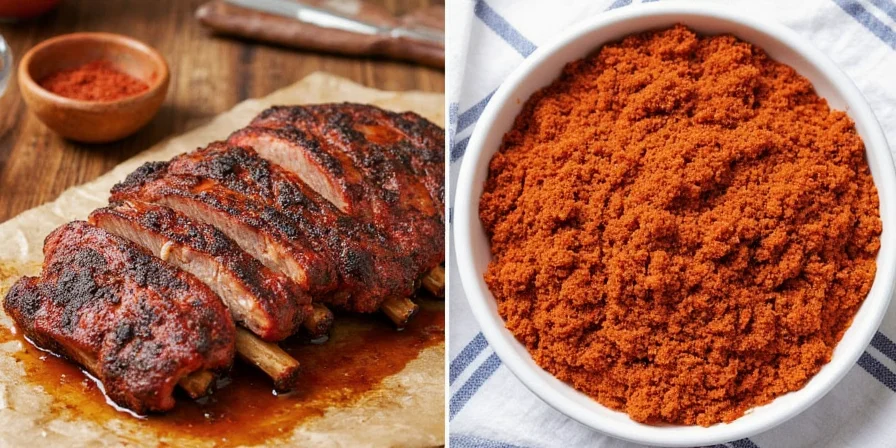
For home cooks seeking to move beyond basic BBQ rubs, this guide reveals scientifically backed spice combinations that transform ordinary ribs into extraordinary. You'll discover why specific pairings create flavor harmony and how to apply them for maximum impact—whether you're hosting backyard gatherings or mastering solo cookouts.
Why a Good Rub Matters
A dry rub isn’t just about slapping some spices on a slab of meat and calling it a day. When done right, a rub creates a flavor crust — that magical layer of goodness that gives texture, depth, and personality to your ribs. Here's what a good rub brings to the table:
- Enhances natural meat flavors
- Helps form a delicious bark (the holy grail of smoked meats)
- Acts as a flavor barrier during cooking
- Can balance out fattiness or richness in meat
- Provides visual appeal with color contrast
The Building Blocks of a Great Rib Rub
| Component | Purpose | Examples |
|---|---|---|
| Salt | Flavor enhancer + moisture regulator | Kosher salt, sea salt, smoked salt |
| Sugar | Caramelizes for crust formation | Brown sugar, turbinado, molasses powder |
| Heat | Spicy kick & complexity | Chili powder, cayenne, crushed red pepper |
| Umami Boosters | Deepens savory notes | GARLIC POWDER, MUSTARD, WORCESTERSHIRE DRY BLEND |
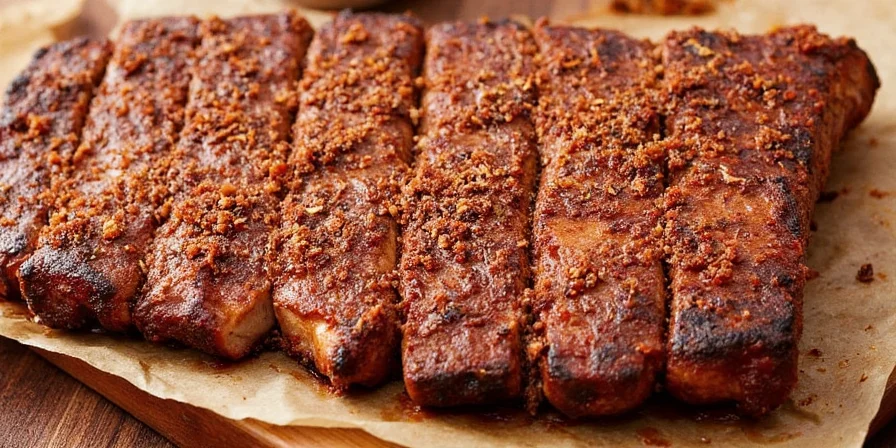
The Flavor Science: Why These Pairings Work
Ever wonder why coffee and cocoa make such a perfect match for pork ribs? It's not magic—it's molecular flavor pairing. Certain spices share key aromatic compounds with meat, creating natural synergies. Here's the science behind three innovative combos:
- Coffee + Cocoa: Both contain pyrazines and furans that mirror Maillard reaction compounds in seared meat, amplifying umami without bitterness.
- Turmeric + Lemon Zest: Curcumin binds with fat molecules while limonene cuts through richness—creating balance via hydrophobic interactions.
- Szechuan Peppercorns + Star Anise: Hydroxy-alpha-sanshool triggers tingling sensations that heighten perception of anethole, making flavors pop.
Understanding these principles lets you create custom pairings—not just copy recipes. Consider: what compounds does your meat release when smoked? Which spices share that profile?
Innovative Spice Pairings for Next-Level Ribs
Move beyond generic blends with these scientifically curated combinations. Each pairing leverages flavor compound compatibility for maximum impact:
1. Coffee + Cocoa + Cayenne
Earthiness that enhances pork's natural umami. Pyrazines in coffee complement meat's Maillard compounds.
- Ground coffee – 2 tbsp
- Cocoa powder – 1 tbsp
- Cayenne – 1 tsp
- Salt – 1 tbsp
- Brown sugar – 2 tbsp
2. Turmeric + Mustard Powder + Lemon Zest
Bright acidity balances richness through molecular binding. Won't discolor meat when used moderately.
- Turmeric – 1 tbsp
- Mustard powder – 1 tbsp
- Lemon zest (dried) – 1 tsp
- Garlic powder – 1 tsp
- Himalayan pink salt – 1 tbsp
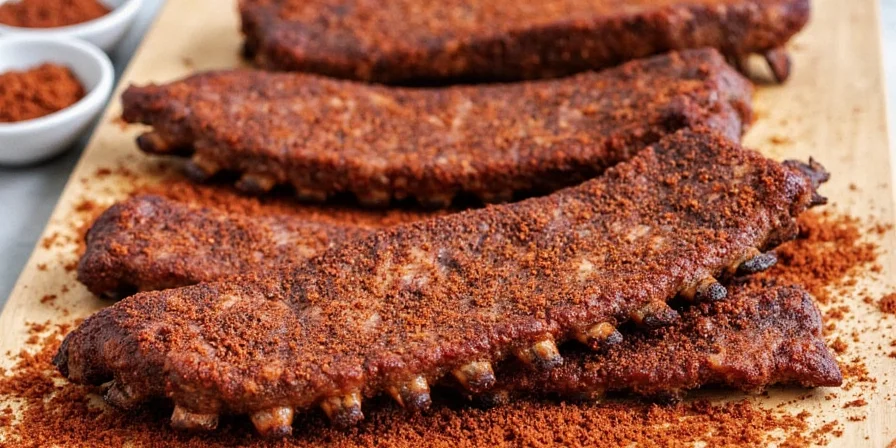
3. Smoked Paprika + Maple Sugar + Black Pepper
Hickory-compatible smokiness with caramelization science. Maple sugar's sucrose breaks down at lower temps than white sugar.
- Smoked paprika – 2 tbsp
- Maple sugar crystals – 1 tbsp
- Black pepper – 1 tbsp
- Onion powder – 1 tsp
- Celery salt – 1 tsp
4. Szechuan Peppercorns + Star Anise + Fennel Seeds
Tingling sensation amplifies licorice notes via trigeminal nerve interaction.
- Crushed Szechuan peppercorns – 1 tsp
- Star anise (ground) – ½ tsp
- Fennel seeds (ground) – 1 tsp
- Salt – 1.5 tbsp
- Brown sugar – 2 tbsp
5. Harissa Blend + Cumin + Caraway
North African warmth where thymol compounds in caraway enhance cumin's earthiness.
- Harissa spice blend – 2 tbsp
- Ground cumin – 1 tsp
- Caraway seeds (ground) – ½ tsp
- Dried oregano – 1 tsp
- Coarse salt – 1.5 tbsp
6. Sumac + Za’atar + Garlic Powder
Tartness from sumac's malic acid cuts through fat—perfect for summer grilling.
- Sumac – 1.5 tbsp
- Za’atar – 1 tbsp
- Garlic powder – 1 tsp
- Olive oil infused salt – 1.5 tbsp
- Brown sugar – 1 tbsp
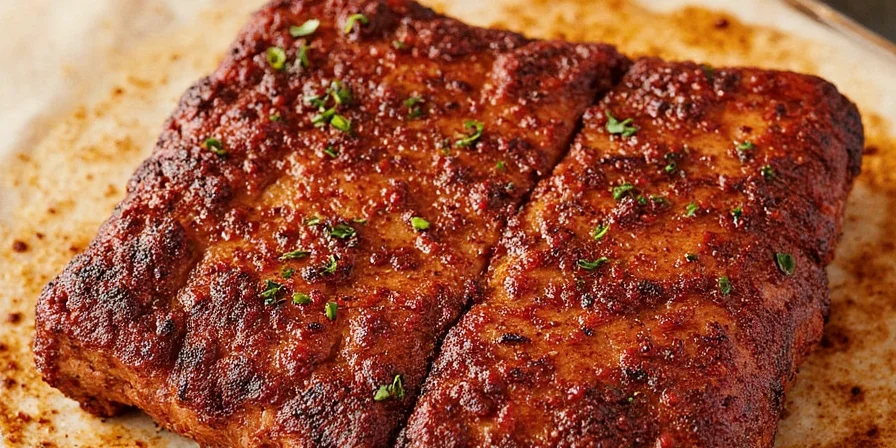
7. Miso Powder + Sesame Seeds + Shichimi Togarashi
Umami depth where glutamates in miso bind with meat proteins.
- Miso powder – 1 tbsp
- Ground sesame seeds – 1 tbsp
- Shichimi togarashi – 1 tsp
- Sea salt – 1.5 tbsp
- Light brown sugar – 1 tbsp
8. Cardamom + Cinnamon + Clove
Scandinavian-Middle Eastern fusion where eugenol compounds amplify sweetness perception.
- Ground cardamom – 1 tsp
- Cinnamon – 1 tsp
- Ground clove – ½ tsp
- Dark brown sugar – 2 tbsp
- Sea salt – 1.5 tbsp
9. Curry Powder + Tamarind + Jaggery
Indian-inspired balance where tamarind's tartaric acid counters jaggery's molasses notes.
- Curry powder – 2 tbsp
- Tamarind powder – 1 tsp
- Jaggery powder – 1.5 tbsp
- Coriander seed powder – 1 tsp
- Sea salt – 1 tbsp
10. Everything Bagel Seasoning + Chili Flakes + Parmesan
Glutamate-rich parmesan enhances bagel seasoning's savory notes without overpowering.
- Everything bagel seasoning – 2 tbsp
- Crushed chili flakes – 1 tsp
- Parmesan cheese powder – 1 tbsp
- Sea salt – 1 tbsp
- Brown sugar – 1.5 tbsp
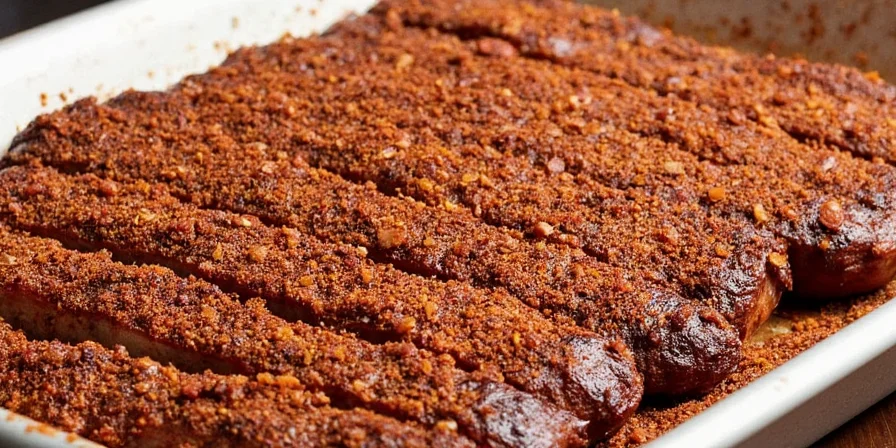
How to Apply & Use Your Rub Like a Pro
Even the best rubs fall flat if applied incorrectly. Follow these tips to ensure every bite is bursting with flavor:
- Dry the meat first: Pat ribs with paper towels to remove excess moisture before applying rub.
- Rub it in: Massage the spices gently into the surface so they stick and start to integrate.
- Rest it: Let the rubbed ribs sit in the fridge for at least 1 hour — overnight is even better.
- Don’t be shy: A heavy hand often yields a more flavorful result. If it looks naked, add more!
- Wrap up: During long cooks (like smoking), wrap ribs in foil once the rub has set to avoid drying out.
- Brush off excess: Before serving, lightly brush off any overly thick clumps to maintain texture balance.
Common Rub Issues (and How to Fix Them)
| Problem | Cause | Solution |
|---|---|---|
| Rub burned too fast | Too much sugar or high heat | Reduce sugar amount by 25% or lower cooking temp to 225°F |
| No crust formed | Insufficient sugar or short cook time | Increase sugar by 20% or extend cook time by 30 minutes |
| Too salty | Overuse of iodized salt | Switch to kosher salt (1:1.5 ratio) and measure precisely |
| Rub fell off | Surface moisture or poor adhesion | Dry meat thoroughly and press rub firmly for 30 seconds |
| Uneven flavor | Inconsistent spice particle size | Sift dry ingredients and apply in multiple light layers |
Frequently Asked Questions
Can I use these rubs on beef ribs too?
Absolutely! Reduce sugar by 25% for beef to prevent burning, and increase salt by 10% to penetrate denser muscle fibers. Apply during the final smoke phase for best results.
How long should ribs rest with rub before cooking?
Minimum 1 hour refrigerated for surface penetration. Overnight (12-18 hours) allows salt to break down proteins for deeper flavor. Never exceed 24 hours—acidic components like tamarind can start "cooking" the meat.
My rub burned during smoking. How do I prevent this?
Lower smoker temperature to 225°F and reduce sugar content. Alternatively, apply half the rub before smoking and the rest during the last hour of cook time to control caramelization.
Are there spices to avoid in rib rubs?
Fresh herbs lose potency when smoked. Stick to dried spices. Avoid pre-ground garlic/onion—they burn easily. Freshly grind whole spices 24 hours before use for optimal flavor release.
Can I make these rubs sugar-free?
Yes, but you'll lose crust formation. Substitute sugar with 2 parts erythritol + 1 part molasses powder for caramelization without sweetness. Test on a small rack first as this alters flavor dynamics significantly.
Final Thoughts: Rub Your Way to Glory
A great rib rub transcends mere seasoning—it's flavor science in action. By understanding why certain spices create harmony, you gain the power to innovate beyond preset recipes. Whether you choose coffee-cocoa's umami depth or everything bagel's savory crunch, the real magic happens when you apply these principles to create your signature blend.
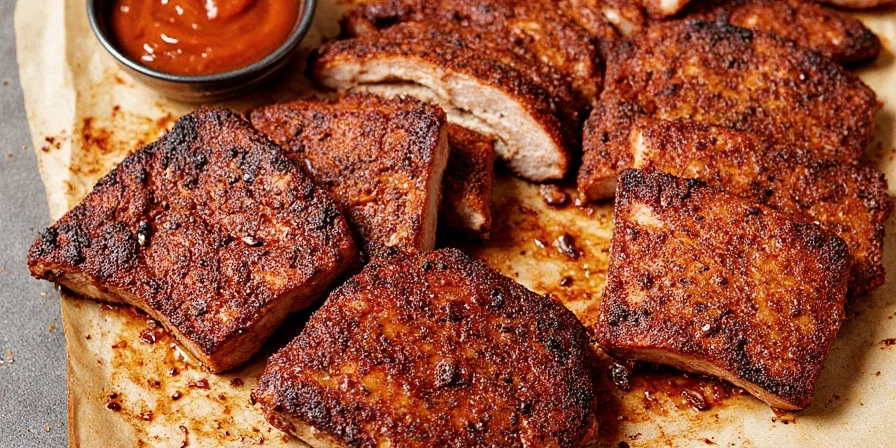
Remember: The best rubs don't fight the meat—they elevate it. So experiment with confidence, adjust ratios based on your wood choice, and most importantly, trust your palate. Your journey to legendary ribs starts with understanding the chemistry behind every pinch and dash.











 浙公网安备
33010002000092号
浙公网安备
33010002000092号 浙B2-20120091-4
浙B2-20120091-4